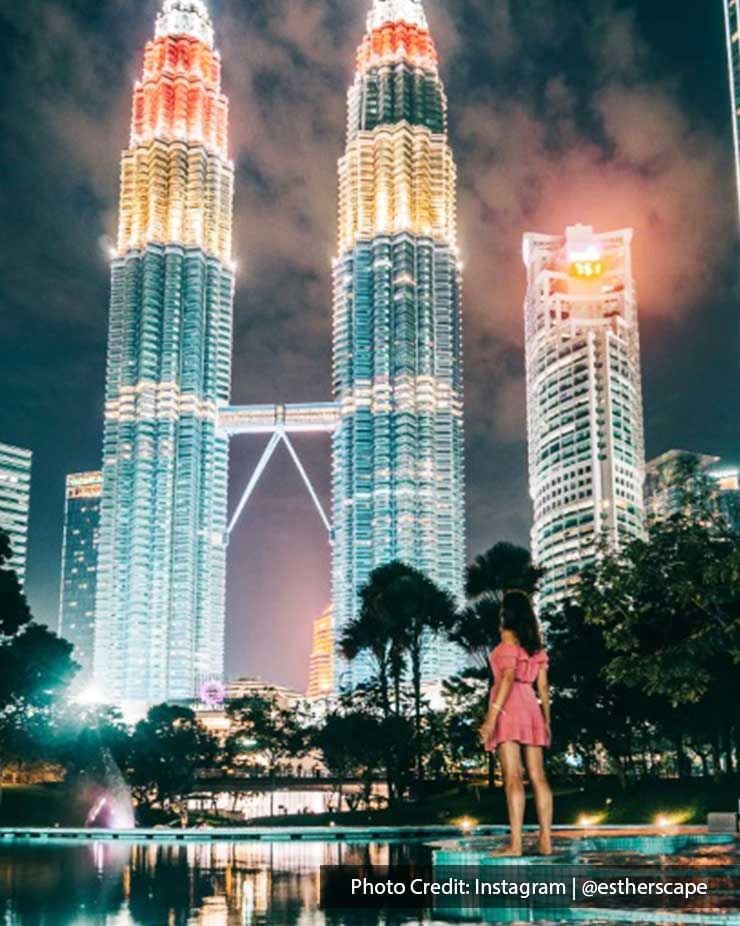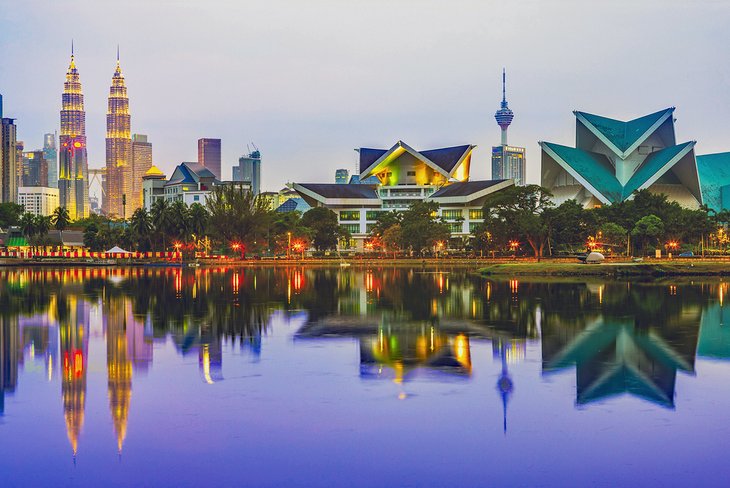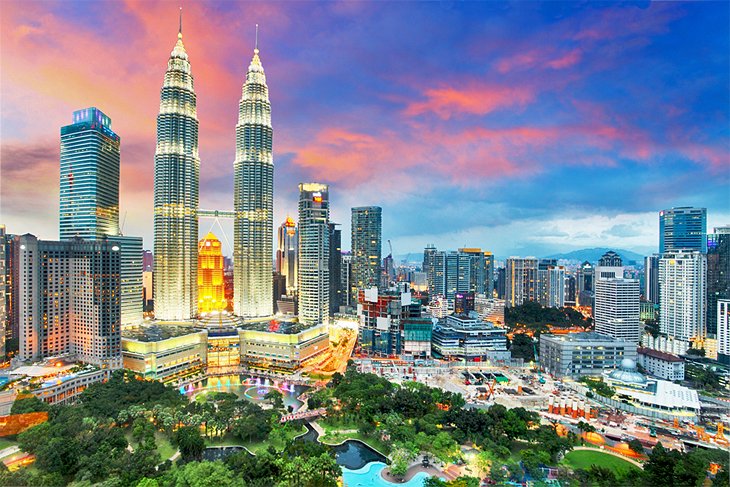
Soaring skyscrapers pierce the tropical sky, their reflections shimmering alongside colonial-era domes and vibrant, chaotic street markets. The air is thick with the tantalizing aromas of chili, lemongrass, and charcoal-grilled satay. This is Kuala Lumpur, the dynamic, multicultural capital of Malaysia—a city where tradition and modernity don’t just coexist; they dance together in a dazzling display of energy.
Often referred to simply as KL, this metropolis is a captivating melting pot of Malay, Chinese, and Indian cultures, creating a tapestry of experiences that can satisfy every type of traveler. From the dizzying heights of the world’s tallest twin towers to the spiritual tranquility of ancient caves, Kuala Lumpur is a city of unforgettable contrasts. This comprehensive guide will navigate you through its storied past, its must-see attractions, and the practical tips you need to make your journey a seamless adventure.
A Glimpse into Kuala Lumpur’s Past

Related Articles about Kuala Lumpur: A Traveler’s Guide to the Dazzling Heart of Malaysia:
- Ukraine: A Journey Through History, Culture, and Breathtaking Beauty
- Spain: A Tapestry of Sun, Soul, and Unforgettable Attractions
- Hong Kong’s Epitome of Luxury: A Connoisseur’s Guide to the City’s Finest Hotels and Unforgettable Experiences
- Switzerland: A Symphony of Alpine Majesty and Timeless Charm
- Turkey: A Tapestry of Wonders – Unveiling Its Top Attractions, Rich History, and Essential Travel Guide
To truly appreciate KL, one must understand its humble origins. The city’s name translates to "muddy confluence," a reference to the meeting point of the Klang and Gombak rivers where it was founded in the 1850s. It began as a rough-and-tumble tin-mining outpost, attracting a wave of Chinese prospectors seeking their fortune. A key figure in its early development was Yap Ah Loy, the third Kapitan Cina of Kuala Lumpur, whose leadership transformed the settlement from a lawless frontier town into a thriving commercial center.
The British colonial administration, which took control in the late 19th century, left an indelible mark on the city’s architecture. Grand Moorish-style buildings like the Sultan Abdul Samad Building rose from the mud, laying the groundwork for a more organized capital. Following Malaysia’s independence in 1957, Kuala Lumpur was officially declared the nation’s capital. The subsequent decades saw an explosion of growth, culminating in the construction of iconic symbols of modernity like the Petronas Twin Towers, cementing its status as a global city and the proud heart of a new, ambitious Malaysia. This rich history is visible on every street corner, where modern glass towers stand shoulder-to-shoulder with pre-war shophouses.
The Unmissable Attractions: KL’s Crown Jewels
Kuala Lumpur’s attractions are as diverse as its culture, offering a perfect blend of natural wonders, architectural marvels, and cultural immersion.
1. The Petronas Twin Towers & KLCC Park
No trip to Kuala Lumpur is complete without marveling at its most iconic landmark. Soaring to a staggering height of 452 meters, the Petronas Twin Towers were the tallest buildings in the world from 1998 to 2004 and remain the world’s tallest twin structures. Their design, inspired by Islamic geometric patterns, is a stunning fusion of modern engineering and traditional art. For a breathtaking perspective, book tickets in advance to walk across the double-decker Skybridge on the 41st floor and ascend to the Observation Deck on the 86th floor. The panoramic views of the cityscape are simply unparalleled.
At the base of the towers lies the beautifully landscaped KLCC Park, a 50-acre urban sanctuary. It features jogging tracks, water fountains, and a large children’s playground. In the evening, don’t miss the Lake Symphony Water Fountain show, a spectacular display of light, sound, and water set against the glittering backdrop of the towers.
2. Batu Caves
Just a short train ride from the city center lies one of Malaysia’s most significant religious sites. The Batu Caves are a series of limestone caves and cave temples dedicated to the Hindu deity Lord Murugan. Your arrival is dominated by the sight of a colossal, 42.7-meter-high golden statue of Lord Murugan, the world’s tallest of its kind. To reach the main Temple Cave, you must conquer a steep flight of 272 rainbow-colored steps, often while being cheekily observed by the resident long-tailed macaque monkeys (hold onto your belongings!). The cavernous interior of the main cave is awe-inspiring, with sunlight filtering through openings in the ceiling, illuminating ornate Hindu shrines. The site is especially vibrant during the Thaipusam festival, drawing millions of devotees.

3. Merdeka Square (Independence Square)
This is the historical heart of Kuala Lumpur. It was here, on August 31, 1957, that the Union Jack was lowered and the Malayan flag was raised for the first time, signifying the nation’s independence. The square is a vast, manicured lawn centered around a 95-meter flagpole, one of the tallest in the world. The area is framed by magnificent colonial-era buildings, most notably the Sultan Abdul Samad Building. With its striking copper domes and clock tower, this architectural gem once housed the offices of the British colonial administration and now serves as a backdrop for countless photographs and national events.
4. Thean Hou Temple
Perched on a hill with commanding views of the city, the Thean Hou Temple is one of the oldest and largest Chinese temples in Southeast Asia. This spectacular six-tiered temple is a masterpiece of traditional Chinese architecture, adorned with intricate carvings, ornate rooftops, and countless red lanterns that create a magical atmosphere, especially at night. Dedicated to Mazu, the goddess of the sea, it is a functioning place of worship where you can observe devotees lighting incense and offering prayers. Its serene courtyards and beautiful gardens provide a peaceful escape from the city’s hustle.
5. Central Market & Petaling Street (Chinatown)
For a deep dive into KL’s cultural and commercial soul, head to Central Market. Housed in a beautifully preserved 1928 Art Deco building, this vibrant hub is a treasure trove of Malaysian arts, crafts, and souvenirs. Organized into "lorongs" (lanes) representing different cultural groups, you can find everything from batik textiles and pewter-ware to traditional wood carvings.
A short walk from Central Market is Petaling Street, the bustling core of KL’s Chinatown. Under a canopy of red lanterns, this lively street market is a sensory overload in the best way possible. The air is filled with the sizzle of woks and the calls of vendors selling everything from imitation goods to delicious street food. Come here for the experience, to bargain for a souvenir, and most importantly, to sample local delicacies like hokkien mee and salted roast duck.
6. Menara KL (KL Tower)
While the Petronas Towers are more famous, the KL Tower offers what many consider a superior viewing experience. Standing at 421 meters atop the Bukit Nanas Forest Reserve, its observation deck is higher than the Petronas Skybridge, providing an uninterrupted 360-degree view of the city. For the thrill-seekers, the open-air Sky Deck and the glass-bottomed Sky Box offer a heart-pounding opportunity to see the city sprawl directly beneath your feet.
Navigating the Metropolis: Getting Around KL
Kuala Lumpur boasts an efficient and affordable public transportation system that makes exploring the city a breeze.
- Rail Network (LRT, MRT, Monorail): This is the backbone of KL’s public transport. The interconnected light rail, mass rapid transit, and monorail lines connect nearly all major tourist attractions and shopping districts. The main interchange hub is KL Sentral.
- Go KL City Bus: A fantastic and often-overlooked service, the Go KL City Bus offers several free, air-conditioned bus routes that circle through the city’s key districts, including Bukit Bintang, KLCC, and Chinatown.
- Grab: The Southeast Asian equivalent of Uber, Grab is the dominant ride-hailing service in Malaysia. It’s incredibly convenient, reliable, and generally very cheap for getting to places not directly on a train line.
- Walking: Many of KL’s central districts are pedestrian-friendly. The KLCC to Bukit Bintang Walkway is a fully air-conditioned elevated path that allows you to walk comfortably between the two popular areas, avoiding the city’s heat and traffic.
Where to Stay: Accommodation for Every Traveler
Kuala Lumpur offers a vast range of accommodation options to suit any budget or travel style.
- Luxury (from $150 USD/night): For five-star luxury with spectacular city views, the KLCC (Kuala Lumpur City Centre) area is unbeatable. Hotels like the Mandarin Oriental, Grand Hyatt, and Traders Hotel offer impeccable service and infinity pools overlooking the Petronas Towers. The Bukit Bintang area also has high-end options like The Ritz-Carlton and JW Marriott.
- Mid-Range ($50 – $150 USD/night): This category offers the best value. Areas like Bukit Bintang, KL Sentral, and the fringes of KLCC are packed with excellent 3- and 4-star hotels. Brands like Aloft, Mercure, and numerous boutique hotels provide comfortable rooms, great amenities, and convenient locations without the premium price tag.
- Budget (under $50 USD/night): KL is a backpacker’s paradise. The best budget options are concentrated in Chinatown (Petaling Street) and around KL Sentral. Here you’ll find a plethora of clean, modern hostels, guesthouses, and budget hotels offering fantastic value for money.
Timing Your Trip: The Best Time to Visit
Kuala Lumpur has a tropical rainforest climate, meaning it is hot and humid year-round, with frequent rainfall. However, some months are better than others.
- Dryer Seasons: The periods from May to July and December to February are generally considered the best times to visit, as they experience slightly less rainfall. That said, a short, intense tropical downpour can happen at any time, so always pack a light rain jacket or umbrella.
- Festivals: To experience KL at its most vibrant, consider timing your visit with a major festival. Thaipusam (January/February) at Batu Caves is an intense cultural spectacle. Chinese New Year (January/February) sees Chinatown erupt in celebration, while Hari Raya Aidilfitri (date varies) and Deepavali (October/November) offer unique insights into Malay and Indian culture, respectively.
Essential Travel Tips for a Seamless KL Adventure
- Dress Respectfully: While KL is a modern city, it’s important to be mindful of local customs. When visiting mosques or temples, ensure your shoulders and knees are covered. Many religious sites provide robes for visitors.
- Stay Hydrated: The tropical heat and humidity can be draining. Carry a water bottle with you and drink plenty of fluids throughout the day.
- Embrace the Food Culture: From hawker stalls to high-end restaurants, KL is a food lover’s dream. Be adventurous and try local dishes. For a clean, air-conditioned introduction to street food, visit the food courts in major shopping malls like Lot 10 Hutong.
- Get a Local SIM Card: Staying connected is easy and cheap. You can purchase a tourist SIM card with a generous data package at the airport upon arrival.
- Currency: The local currency is the Malaysian Ringgit (MYR). Credit cards are widely accepted in hotels, restaurants, and malls, but you will need cash for street food vendors and local markets.
Conclusion
Kuala Lumpur is more than just a city; it’s a vibrant mosaic of cultures, a testament to Malaysia’s rapid development, and a playground for the senses. It’s a place where you can spend your morning exploring a sacred cave temple, your afternoon shopping in a luxury mall, and your evening feasting on world-class street food under the glow of futuristic towers. With its warm hospitality, incredible diversity, and seamless blend of old and new, Kuala Lumpur promises an adventure that will leave you utterly captivated.





